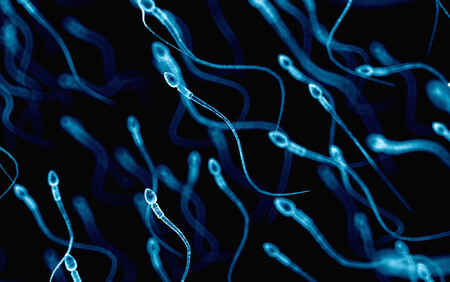
Using Donor Sperm
- Examinations
- Fertility Treatments
- Donor Program
- LGBT-couples and single women
- Network for Solo Mothers
- Prices
- Counseling Therapy at Trianglen
- RI Witness
In some cases, the oocytes will be fertilised with donor sperm. This may be done if the man does not produce usable sperm cells. Or it may be when a woman is treated without a male partner. It is possible to use different types of donor semen as described in more detail below.
Legal and other aspects of using donor sperm
The legal implications of sperm donation depend on the type of sperm used. Please see below for a brief description of some of the legal aspects associated with different types of donor semen.
The Danish Health and Medicines Authority demands that the following information be given to all women/couples treated with semen from a sperm donor:‘When donors are selected it is sought to limit the risk of inheritable diseases, malformations et cetera by only using donors who have declared that they are not aware of such inheritable risks in their kindred and who have been asked about such conditions by an experienced health professional. Despite these precautions, the risk of inheritable diseases is not excluded. If the child unexpectedly has a condition at birth or during the first years of life which you are informed could be inheritable it is therefore important that you inform the clinic or the health professional who has treated you so it can be decided whether the donor can still be used. The same applies if you find out that a contagious disease may have been transferred by donor semen or donor eggs. Even though the donor is tested and found not to have transmittable diseases such as HIV or hepatitis the risk is never zero’.
Donor testing
The sperm bank’s doctor examines donors. They have to be physically and mentally healthy, and there must not be inheritable diseases in their family. The donors must have a normal chromosome test. They are tested for serious infectious diseases (venereal diseases, hepatitis B and C and HIV). The sperm is only released for use after having been stored frozen for 6 months and after a repeated negative HIV test.
The extent of testing performed by the various sperm banks differ. Therefore, we recommend that you consult the individual sperm bank’s website for detailed information about the donor testing in that sperm bank.
Please see the sperm banks’ websites for details about donor testing.
Selecting a sperm donor for treatment
As described below it is possible to choose between different types of sperm donors (‘Anonymous’, ‘Extended profile’, ‘Open’ and ‘Own’). Depending on the type of donor, you may base your selection on basic characteristics such as eye colour, hair colour, height, weight and skin colour or more detailed information, such as childhood photos, voice samples et cetera.
The sperm banks offer different donor types and thus various levels of information about the donor. We recommend that you select a donor from a sperm bank (for example Skejby CryoBank, Cryos or European Spermbank). When you have found a suitable donor, you can have sperm ‘straws’ sent to our clinic. We can then store the straws at minus 196 °C until they are used for treatment.
Different sperm preparations and sperm qualities are available. For us the important issue is that we for one treatment cycle (insemination or IVF) have at least 5 million sperm cells of good quality. You can confirm with the sperm bank that the sperm straws fulfil this.
All sperm has to be ordered at a sperm bank. We do not have any frozen sperm at the clinic.‘Anonymous’ sperm donor
For an anonymous donor the sperm bank may provide information about the donor’s eye colour, hair colour, height, weight and skin colour. You may select sperm donors from the sperm banks’ websites.
The donor will forever remain anonymous and his identity will never be revealed to you or the child. Neither will the donor ever have any information about the children resulting from the treatment with his sperm.
When donor insemination is used to treat a heterosexual couple the man must declare that he will be the father of the child/children, and assume all the responsibilities associated with fatherhood.
The ‘Anonymous’ donor has no legal obligations or rights in relation to the child.‘Extended profile’ sperm donor
A sperm donor with an ‘Extended profile’ is a donor where there is more information available than the basic information that may be provided for an ‘Anonymous’ donor. ‘Extended profile’ donors are per definition non- anonymous. The ‘Extended profile’ may contain information about blood type or more detailed information such as family relations, interests, education, voice sample, baby photos et cetera.
When donor insemination is used to treat a heterosexual couple the man must declare that he will be the father of the child/children, and assume all the responsibilities associated with fatherhood.
The ‘Extended profile’ donor has no legal obligations or rights in relation to the child.‘Open’ sperm donor
An ‘Open’ donor is a donor who delivers sperm to a sperm bank and the sperm bank provides the sperm to fertility clinics. The ‘Open’ donor has made an agreement with the sperm bank that children resulting from treatment with his sperm may contact their donor when they turn 18 years old, if they wish.
The specific terms are agreed between the donor and the sperm bank. Therefore, users of ‘Open’ profile donor semen must themselves obtain detailed information from the sperm bank about the agreement that has been made with the donor concerning later contact between children resulting from treatment with his sperm and him.
The ‘Open profile’ donor has no legal obligations or rights in relation to the child except for the ‘contact’ possibility.Known or own sperm donor
‘Known/own’ sperm donor
An ‘Known’ sperm donor is a donor whom the woman or couple knows and who has accepted to donate sperm for treatment of the woman, even though the woman and the donor are not married or living together as a couple.
An ‘Own’ donor must be tested for contagious diseases and deposit sperm like other sperm donors. This testing is done in a sperm bank, that can freeze the sperm for later use in a fertility clinic. Please note that it is not possible to use ‘fresh’ not frozen sperm from a known sperm donor. It must be frozen in a sperm bank prior to treatment.
The donor must be examined medically to determine if he is suitable as sperm donor. This testing can be done at Trianglen. For prices, please consult our pricelist or the secretaries. When the known donor has been evaluated and accepted, the frozen sperm can be transferred to the fertility clinic for use.
According to Danish Law, a ‘known’ donor is legally the father of the child/children resulting from the treatment i.e., the ‘known’ donor has duty to financially support the child, and the child will inherit from the ‘known’ donor. An exception from this rule applies when the woman being treated lives in a ‘marriage-like’ relationship with a male partner or if she has a female partner who assumes for ‘co-motherhood’ for the child.
The legal aspects regarding the donor’s fathership or the female partner’s co-mothership must be settled before the fertility treatment. The form called ‘Blanket 9’ from Familieretshuset (‘The Family Law House’) is used for this purpose.
There are some important issues to consider when using a ‘known’ donor
- The known donor must give his written consent prior to each use of his sperm or blastocysts fertilised with his sperm. The treatment will be cancelled if the sperm donor’s consent is not in place before the stage in the treatment where his sperm or the blastocyst must be thawed.
- The known donor can - at any time - request that the fertility clinic discards any unused sperm and any frozen blastocysts created with his sperm.
- If the donor should pass away, any stored sperm samples and blastocysts fertilised with his sperm cannot be used for treatment and must be discarded.
Reservation of donor sperm from the same donor
Reservation of sperm from the same donor for future treatment
You can reserve/buy sperm from the same donor for future treatment. When you have become pregnant
with a donor, you may contact the sperm bank and buy ‘straws’ from the same donor for future use. The
straws should remain in the sperm bank until the time when you want to use them.
Want to know more?
If you want to know more about using a sperm donor please call us or book a consultation.
